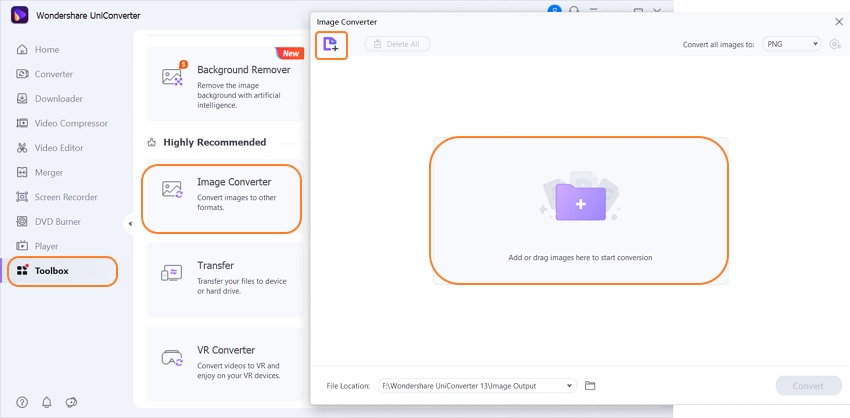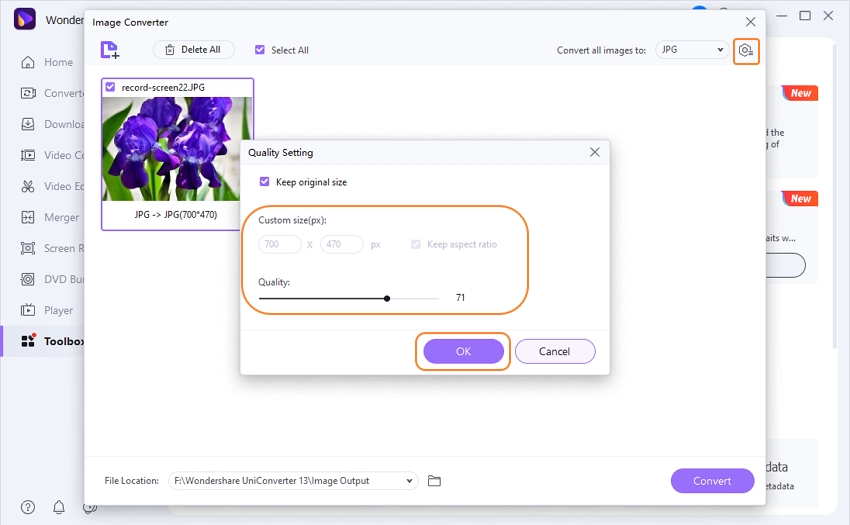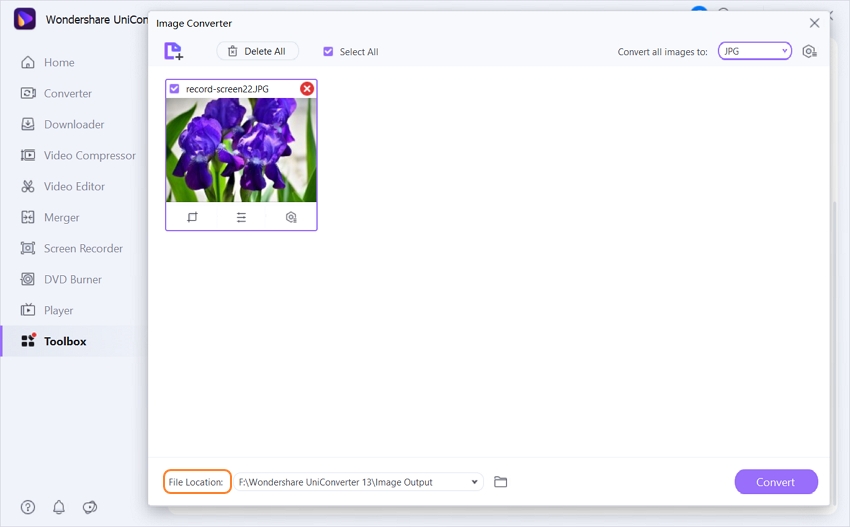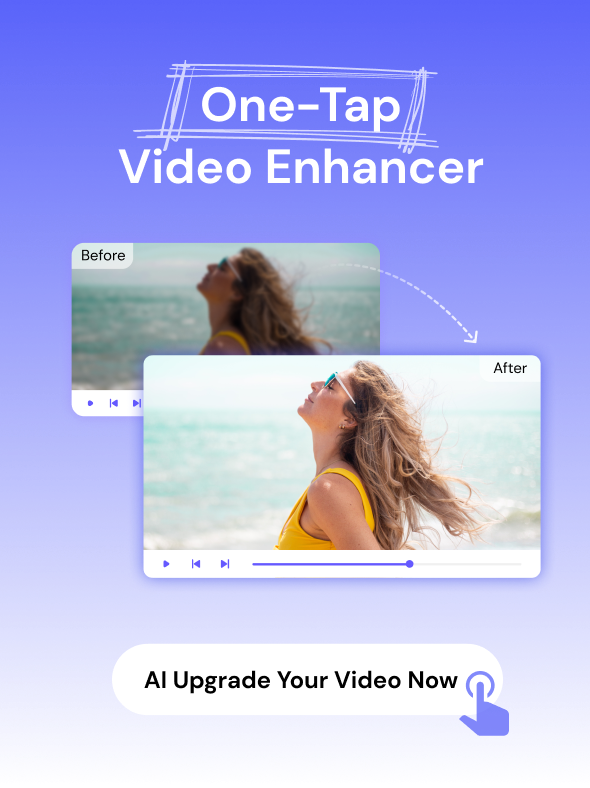If you are a photography enthusiast, then RAW and JPEG are not new terms for you. JPEG is a standard format used by point and shoot cameras, smartphone, and other devices for capturing processed images. RAW, on the other hand, captures the images in unprocessed or in minimally processed manner. Both these formats have their set of pros and cons — more about RAW Vs. JPEG in the following parts.
Part 1. What is RAW?
a. About RAW Format-What is a RAW File?
In the simplest terms, RAW is a format that records the images as captured by the sensor of the digital camera or the scanner. These files are minimally processed and thus cannot be edited or printed using a graphics editor. RAW is a proprietary format that is specific to the model of the camera or the device from which it is captured. Also termed as a digital negative, the equipment, editor and other programs must be compatible with the RAW format to open, view and edit the same.
b. Advantages of RAW Format
There are several advantages of using the RAW format as enlisted below:
- Shooting in RAW format offers a dynamic range of color gamut along with a wide choice of color shades.
- Capturing an image in the RAW format offer better control and adjustment as the file contains all the settings, camera-specific manufacturer information, image metadata, and others details.
- The RAW format uses lossless compression and does not have any image compression artifacts.
- A file in the RAW format allows you to use better and sophisticated sharpening algorithms for the images.
- Files in RAW format can be used to merge to create panoramic or HDR images.
- Better detailing, high quality, high level of brightness, and efficient workflow are some of the other benefits of using the RAW format.
c. Disadvantages of RAW Format
Listed below are some of the common cons associated with using the RAW format.
- Being unprocessed, a RAW file occupies a lot of storage space, and thus only fewer files can be accommodated on a memory card.
- To view a RAW file normally, you need to process and convert it. Moreover, these files are not standardized across different device manufacturers. For instance, a RAW file of Canon camera cannot be read by the Nikon and vice-versa.
- RAW files cannot be shared quickly, and they take longer backups.
d. Why Shoot in RAW?
One of the best reasons to shoot in RAW is to have the freedom and the control over the photographs as to how they look. An array of flaws like exposure, white balance, and others can be adjusted as desired while shooting in this format. The images captured in the RAW form can be enlarged to a great extent while maintaining the high contrast and quality. Moreover, converting a RAW image to JPEG offers better file quality in comparison to the files captured directly in the RAW format.
Part 2. What is JPEG?
a. About JPEG format?
Standing for Joint Photographic Experts Group, JPEG is a commonly used lossy compression format for digital images. The form is capable of reducing the file size considerably while maintaining decent file quality. Majority of the display devices, editing software, and other programs are compatible reading the format. JPEG format allows you to adjust the level of compression and select the size and the quality as needed.
b. Advantages of JPEG Format
Several benefits are using the JPEG format, and some of the major ones are listed below.
- JPEG files offer compatibility with all popular devices and programs, thus making the format a favorite choice among the users.
- JPEG files are processed entirely, and all the settings like the colors, saturation, white balance and others are already applied according to the parameters selected. Thus there is no need for any post-processing or file editing while using the format
- JPEG file offers smaller file size while maintaining decent quality and thus occupies less storage space. Moreover, being small in size, the cameras write the JPEG file at a faster rate when compared to the RAW format.
c. Disadvantages of JPEG Format?
Below listed are the common disadvantages related to the JPEG format.
- JPEG offers lossy compression that results in loss of data from the images. In highly compressed images, posterization issues might occur due to condensation.
- The options of recovery in JPEG format ate limited as the form contains fewer data. So managing the issues of overexposure of the underexposure of the image in JPEG format is confusing.
- JPEG images are impacted through the camera settings as the cameras process the photos entirely in the format, so if any camera setting that results in the damage of the image cannot be reversed.
d. Why Shoot in JPEG Format?
One of the significant reasons for shooting in JPEG is the smaller file size offered by the format in comparison to a RAW file. Thus JPEG files need less storage space, can accommodate more data are also easier to share. Moreover, an image in the JPEG format can be easily read by several regular devices, players, and programs. JPEG is a user-friendly format that can be handled by an amateur as well as an expert equally.
So to shoot in RAW or JPEG depends on available space, quality, and other factors.
Part 3. Free Image Converter Software-Convert RAW to JPEG
No matter whether you have captured your images in RAW or JPEG, there are several tools available to convert the format. One such excellent software that facilitates converting RAW images to JPEG is Wondershare UniConverter. This desktop-based program once installed on your Windows or Mac system, facilitates conversion in high quality without any file size or other limitations. The files are converted in high quality and with batch processing; multiple files can be converted at a time.
- · Convert RAW to JPEG in high quality.
- · Facilitates batch processing for converting multiple files at a time.
- · The built-in editor of the software allows image editing.
- · Windows and Mac version of the software available for download.
- · Versatile toolbox combines Image Converter, GIF maker, video compressor and screen recorder, and others.
Steps to Edit and Convert RAW to JPEG using Wondershare UniConverter
Step 1. Add RAW Images to the Software
Download, install, and run the Wondershare UniConverter software on your system. Choose the Toolbox tab and click on the Image Converter option. A new pop-up window will open where click on the + sign to browse and load the local RAW images. Alternatively, click on the + Add Images button to add the file. Multiple files can be added here.

Step 2. Choose the JPEG as Target Format and Edit Files
The files added will appear on the interface with details and a thumbnail image. Expand the drop-down options at Convert all images to: prospect at the top-right corner. Choose JPEG from the list. Clicking on the editing icon will open a pop-up window where you can change the output file size. Move the progress bar to improve the file quality. Clicking on the OK button will confirm the changes made.

Step 3. Convert RAW to JPEG Format
At the File Location tab, choose the desktop location to save the converted files. Finally, click on the Convert button to start the conversion process.

Part 4. Best Online RAW to JPEG Converter for Free
Online UniConverter
URL: https://www.media.io/image-converter.html
Online UniConverter is a web-based online tool for you to convert and compress images, videos, and audio files for free. There is a free trial area below, and you just need to upload or drag and drop your RAW files to the function area, select the JPEG/JPG as the output format, then click the Convert button to start the RAW to JPEG conversion.
We have discussed RAW and JPEG difference in the above parts of the article along with details on RAW image Vs. JPEG. Choose the method that best suits your requirements.
Want to know more information about Wondershare UniConverter? Check the below for more details.


